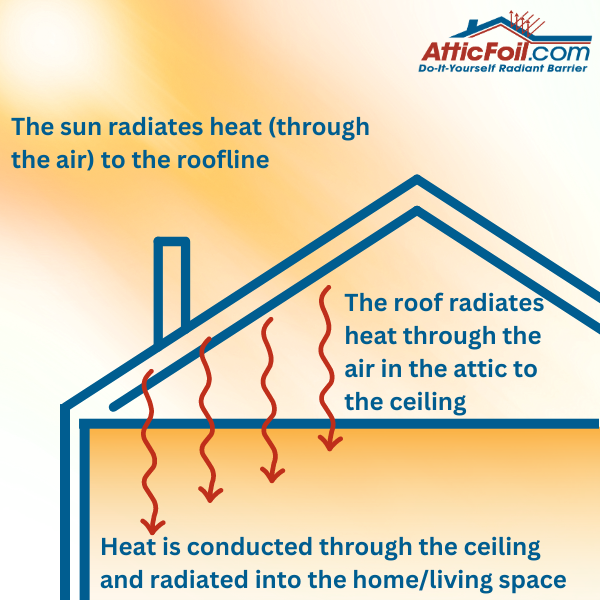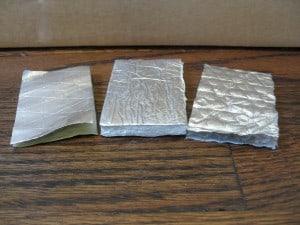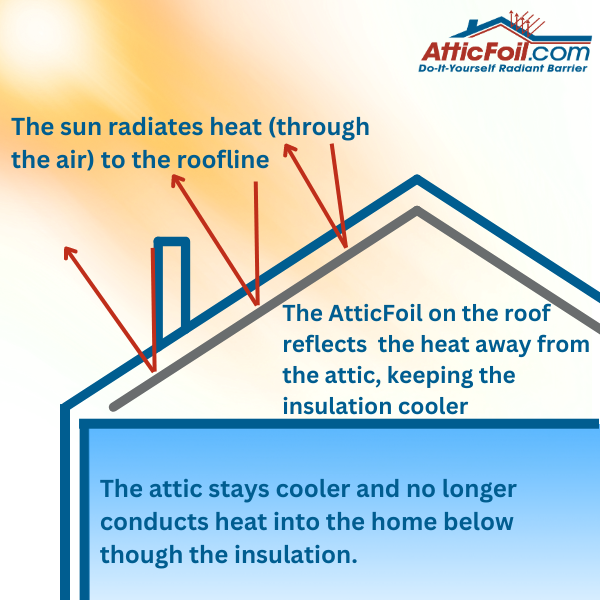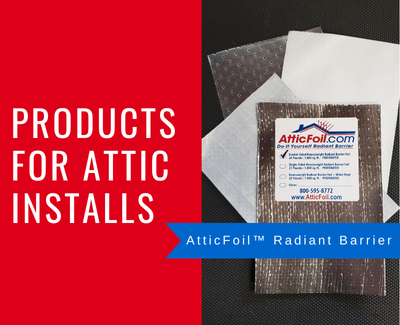What is the R-Value of AtticFoil™?
R-Value is a term to describe how quickly heat will pass through (or be absorbed) by a product. This testing to designate an R-value only applies to conductive heat flow, not radiant heat flow. Conductive heat will only pass through a solid object (or several objects that are in contact with one another – like the layers of your roof on your home). Radiant heat is heat that passes through a gas or a vacuum, so this is the kind of heat the sun produces that radiates to earth until it is absorbed or reflected.
Every product has a different R-Value. For example, wood has an R-Value of 1 for each inch of wood; so three inches of wood has an R-Value of 3. Styrofoam or EPS (expanded Polystyrene) has an R-Value of 3.85 per inch; therefore, three inches of Styrofoam will have an R-value of over 11. This is a great real-life example of why we don’t make coffee cups out of wood, Styrofoam keeps the heat in longer!
This might surprise you, but radiant barrier foil on its own has virtually no R-Value!
This is important to understand because radiant barrier does not take the place of traditional insulation (fiberglass, cellulose, etc.). Traditional attic insulation has R-value; this works to slow conductive heat. Radiant barriers reflect radiant heat; both conductive and radiant heat are trying to enter your home on a hot, summer day (or leave on a winter day when you are running the heat inside).
The sun heats up the roof and then the heat is transferred by radiant heat across the attic space until it hits the attic insulation. Then, the heat transfer method switches from radiant heat to conductive heat to move through the attic insulation and into your home. This is why you need BOTH types of insulation. Traditional attic insulation and radiant barrier work together and each do their part. Radiant barrier is your first line of defense (against radiant heat) and traditional attic insulation (fiberglass or cellulose) is the second line of defense against conductive heat gain.

What About R-Value and Bubble/Fiberglass/Foam Insulation?
If there is air flow around an object, the R-Value does not really matter.
For example, if you have a heavy jacket and you unzip it and let air get between you and the jacket then it does not matter how thick the jacket is because you have no dead air space. So unless you completely air-seal the attic, bubble foil you will not get the full effectiveness of the R-value and you will be investing a lot more for no supplementary benefit.
Bubble foil does offer some R-Value because of the bubbles (because remember, radiant barrier does not have an R-value on its own). However, we see claims of up to R-14 for some bubble products.
If you read the fine print, this rating is always achieved as part of an overall assembly, which usually includes a lot of dead air spaces. In a lab you might be able to create a perfectly tight seal on bubble foil, but in the real world it is virtually impossible to get these results.

Why R-Value Won't Help in a Vented Attic
If you are installing Bubble Foil in a vented attic (meaning the attic is not sealed air tight), then you don’t need bubble foil; all you need is a foil radiant barrier. You will pay extra for the bubble foil, but you will not get any additional benefit.
Ask yourself this: Would a 2″ inch thick umbrella keep you any cooler on a hot sunny day than a regular umbrella? The answer is no.
The thickness of the umbrella is irrelevant because the air temperature is the same on either side of the umbrella. This is the perfect example of why when we are building a home or structure, we do not put insulation/radiant barrier on the interior walls between rooms. We usually only insulate EXTERIOR walls since there is a big temperature difference between the inside and the outside of the structure.

R-Value only matters when there is a difference in temperatures on either side of the insulation.
Bubble foil products are mostly seen in use in metal buildings (though there are superior options to it, like BlueTex™ insulation) to stop condensation. Other than that very specific application, using a bubble foil type product in an attic (for example, stapling it to the bottom of your roof deck) is overkill and furthermore, you create the potential to trap moisture since bubble foil does not allow water vapor to pass through.
Even though radiant barrier can be attached to some products (like bubble insulation, polystyrene foam board, insulated sheathing, TechShield, and Polar-Ply), the products achieving the r-value from the non-foil materials. Oftentimes the R-values are exaggerated and impossible to achieve in a vented, residential attic space.
Bottom line: Radiant Barrier does not have any R-value but it will block 97% of the radiant heat; therefore, a well-insulated residential attic will use both a radiant barrier and traditional insulation to have the most effective insulated assembly.




